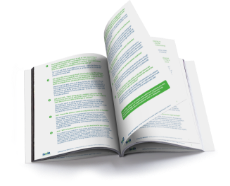How to pay to buy an existing business
When embarking on the journey to buy a business, one of your first thoughts will be – how will payments be structured? Once you’ve decided how to raise funds to purchase the business, the payment terms under which the sale is negotiated will give you a better idea of payment expectations and how stringent or flexible the seller is.
This information is essential for financial planning and budgeting purposes, so funds can be earmarked to pay off the purchase of the business. The way payment is collected is based on the deal structure, such as an asset sale or share sale.
How can deal structure determine payments terms in a business sale?
The way payments are made by the business buyer to the seller will be largely determined by the way the deal is structured. Common deal structures typically include a share sale, asset sale, merger, management buyout (MBO) or earn-out agreement.
Share sale - The shares of a business are sold to another party in whole or part. Payment will be made for the shares by the incoming shareholder to the outgoing shareholder
Asset sale - The buyer will pay for company assets that they have handpicked, including any liabilities that they wish to take on
Merger and acquisition (M&A) - Payment is often made through a combination of cash and equity for the purchase of shares and company assets, although this will vary based on the type of merger
Management buyout (MBO) – An MBO is often funded through a combination of personal loans, finance and equity pooled together by company employees. The remaining balance will typically be made in instalments to the business seller
Earn-out agreement – An earn-out clause involves an agreement between the buyer and seller for a lump sum to follow when the business hits a certain milestone. The milestones are agreed by both parties, such as a profit target or when the business hits a certain value
There are many factors that are taken into consideration when deciding on payment structure, including how the purchase is funded. For a payment arrangement to work, both parties must support the proposal and payments must be manageable, affordable, and feasible over the long term if the balance is spread over time.
- Previous sales and acquisitions experience
- Sector specialisms and average success rate
- Sales value expectations and growth potential

What type of payments structures are available when buying a business?
Paying to buy an existing business can often take two routes – instalments or a lump sum. This will depend on how much the buyer can afford to pay, payment conditions put forward by the seller and how the sale is financed, such as a business loan, company reserves, or seller financing.
Seller financing is a loan offered by the business seller to the buyer to provide easy access to finance, enable the buyer to spread payments and for the seller to earn a mark-up price.
The type of payment method used will often determine the frequency of payments. For example, if a lender transfers a business loan in instalments, the business may be paid for in instalments while the loan is gradually repaid. If a large business with sizeable company reserves buys a small existing business, they may have enough capital to cover the full cost.
Pay in instalments – The buyer will pay a small deposit and spread the remainder across several years. The payment schedule, terms, conditions, payment collection method and interest rate will be detailed in the sales agreement
Lump sum – A business buyer with rich capital may pay a lump sum if they expect the value of the business to increase, they wish to beat another offer or simply prefer to settle the balance upfront
For more information on how payments are made when buying or selling a business and how to raise funds to buy a business, get in contact with a business broker at Selling My Business. We offer a free consultation and with over 60 years of experience, we are well versed in over 12,000 business sales.

